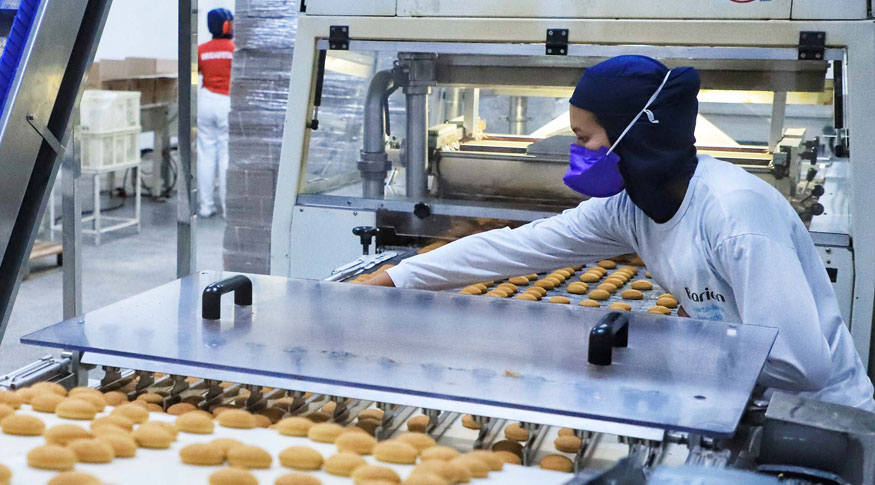IPP
Inflation in industry stays at 1.94% in July, with increases in 20 of the 24 areas surveyed
August 27, 2021 09h00 AM | Last Updated: August 31, 2021 02h45 AM

Industry prices rose 1.94% from June to July, a result above the increases rof May and June and the biggest change in the last three months - there was a change of 1.29% in June and 0.99% in May. Cumulative index in the year reached 21.39%, a record in the time series which started in December 2014, and, in seven months, it is higher than in the entire year of 2020 (19.38%). Cumulative index in 12 months (35.08%) is among the four highest in the series that started in December 2014. In July 2020, increase reached 3.22%. Data come from the Producer Price Index (IPP), released by the IBGE.
The survey measures the change in the prices of products at the "factory gate", without tax or freight, of 24 activities of the mining and manufacturing industries. Eighteen activities recorded positive changes in July. The biggest influences came from food products (0.49 p.p.), oil refining and ethanol products (0.32 p.p.), mining and quarrying industries (0.27 p.p.) and basic metals (0.27 p.p.).
“In general, the indicator of July was influenced by the conditions of international trade due to the cumulative increases and current increases of mineral commodities, agriculture and oil products, with an impact of sales prices and structure of costs of activities of major influence this month. A harsher winter in 2021 and offseason affecting important imputs to the manufacture of food products also contributed to worsen the supply of raw material, exerting pressure on the margin for industrial production in this sector”, says Felipe Câmara, IPP analyst.
Results were homogeneous, with no big highlight by sector They reflect the increases of basic metals (3.68%), mining and quarrying industries (3.61%), wearing apparel (3.45%) and oil refining and ethanol products (3.26%).
Felipe Câmara also calls attention to the effects of currency depreciation, after two months of appreciation, which caused an increase of the amount in reais (R$) obtained from the sale of products quoted in foreign currency in the entire industry. He highlights that, in the case of food products,the cumulative increase and the current increase of commodities affects the prices of beef and sugar.
“Beef has been affected in its structure of costs by the cumulative increase in the chain of soybeans in the last few months, an effect that, in July, was particularly reinforced by slaughte in the off season. At the same time, from the perspective of demand, prices of this product were affected by the internationa demand. An important side effect of the rise of meat prices is the replacement in domestic demand, with an increase in the demand for chicken, which also stood out this month. A similar dynamics affects sugar prices; that shows the effects of the sugarcane off-season together with the rise of international prices,” says Mr. Câmara.
Current rises of the international prices of iron ore and of crude oil affect mining and quarrying industry. In addition to that, cumulative increases throughout the last few months exert pressure on the activities of basic metals and oil refining and alcohol products. This segment represents the impact of higher prices of crude oil on the oil product chain.
“In basic metals, iron ore has an influence on steel products, just like aluminium products reflect the higher prices of its basic imput. The sector has been facing a movement of stock recomposition in the steel product distribution chain, due to the upturn in demand of the last few months. That ends up having an effect on industry prices in this economic group,” the IPP analys adds.
Concerning the major economic categories, the influence on IPP (1.94%) was of 2.14% in the case of capital goods; 1.90% in intermediate goods; and 1.98% in consumer goods, of which 0.76% was the change seen in durable consumer goods and 2.22% in semi and non-durable consumer goods.
More on the survey
The IPP aims at measuring the average change of sale prices received by the domestic producers of goods and services, as well as its evolution over time, signaling the short-term inflationary trends in Brazil. It is a key indicator for the macroeconomic follow up and, consequently, a valuable analytical instrument to decision takers, either public or private.
The survey investigates, in slightly more than 2,100 enterprises, the prices received by producers, free from tax, tariffs and freight, defined according the most usual commercial practices. Nearly 6 thousand prices are collected monthly. Complete tables can be found at Sidra.




















